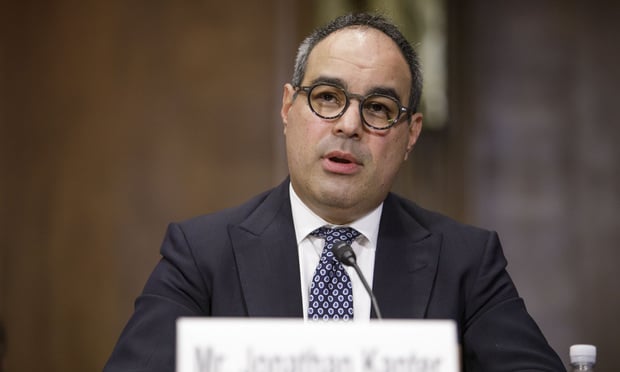When you think about it, the very foundation ofthe insurance industry is based on person-to-personconnection. The secret is out: Planning ahead is the key foreffective benefits communication before, duringand after open enrollment season.
|While it may not actually be a secret, many employers stillunderestimate the power of having a plan in place tomarket benefits to employees.
|There are more health insurance options than ever before – andit may be confusing for some employers to keep up with. Brokersshould take time to provide clients with the information they needto effectively market product offerings to employees. By doing so,brokers will help employers engage employees in the benefitsselection process and ensure employees are making the bestdecisions for their situation.
|One great way for employers to allow employees to customizetheir benefits packages to meet their families’ specificneeds is by making voluntary insurance productsavailable.
|That said – here are six key voluntary insurance products toemphasize as you speak with employers and their employees duringopen enrollment.
|
1. Critical illness insurance
While many people choose to be optimistic, the truth is that no oneis immune to life-altering illnesses.
According to the Centers for Disease Control and Prevention (CDC),more than 795,000 people in the U.S. have a strokeeveryyear, and approximately 735,000 people in the U.S. have aheart attack each year.
Reviewing the benefits of critical illness insurance is oneway you can help clients with their marketing strategy. Withoutfinancial protection, millions of families have drained theirsavings, maxed out their credit cards and even refinanced theirhomes due to medical bills.
Stress that critical illness policies allow employees to stay aheadof medical and out-of-pocket expenses that occur from certainmedical issues, such heart attack or stroke. Employers that caneasily explain the importance of specific benefits will be able toprovide better guidance to employees.

2. Life insurance
Life insurance needs are heavily dependent on the individual’sstage in life – in terms of career, family and personal values.Therefore, it is vital to talk through the different policyoptions with workers based on their specificsituations.
Help employers market life insurance to employees bysuggesting that no one wants their loved ones to be left withfinancial stress after the loss of a family member. Life insuranceis a way to soften the financial burden left to lovedones.
Also, be sure to let your clients know that since premiums arededucted from workers’ paychecks, it’s easy for them to forgetwhich options they have. Remind employers and employees that it’sbeneficial to review and access life insurance policies frequentlyto make sure they take into account any life-changing events andalways have adequate protection.

3. Short-term disability insurance
The importance of short-term disabilityinsurance cannot be overstated. According to arecent financial study, there is a 3-in-1 chance of an individualsuffering a disabling illness or injury that would keep them out ofwork for three months or more.
Plus, 30 percent of full-time employees indicated that they are notconfident about paying their bills if they or another family memberwas out of work that length of time.
Sharing these eye-opening statistics with clients is a good way toprovide them with resources and information to best marketdisability insurance to their workforce.

4. Accident insurance
A LIMRA study found 6-in-10 Gen Xers and Gen Y-ers said an incomeloss due to illness or injury would have a significant financial impact on theirhouseholds. Individual accident insurance can helpemployees — regardless of their generation—stay ahead of medicalbills.
If an employee has an accident, costs that need to be factored intothe equation could include: emergency treatment, hospital stays andmedical exams, and transportation and lodging needs. That’s on topof an employee’s regular responsibilities such as the mortgage orrent, car payments, child care expenses and utility bills. None ofthese responsibilities come to a halt because of anaccident.
The selling point is to let your clients know that voluntary accident insurance helpsemployees cope with all costs associated with serious andnot-so-serious accidents. It’s important for brokers to explainthat benefits are paid directly to employees, unless otherwiseassigned, so they can use them to help with normal bills orout-of-pocket fees that aren’t covered by major medicalinsurance.

(AP Photo/Gerry Broome)
|5. Cancer Insurance
According to the American Cancer Society, approximately 1.6 millionnew cancer cases are expected to be diagnosed in the U.S. this year alone.
In fact, the lifetime risk of developing cancer is slightly lessthan a 1in-2 risk for men and a little more than 1 in 3 for womenin the U.S. Of course, nobody wants to think about theirchances of needing a cancer policy; however, given the odds, this isa product many employees should consider.
It’s important for brokers to ensure their clients are stressingthe importance of knowing medical family history whenchoosing benefits. A cancer policy can help protect employees fromthe overwhelming costs that may come along with being diagnosedwith this disease.

6. Hospital indemnity insurance
Hospital inpatient care accounts for nearly a third of U.S healthcare costs. The average length of a hospital stay is 4.5 daysat a total cost of $10,400. With costs that high, even if anemployee has good major medical insurance, that coverage probablywon’t be enough to pay all expenses associated with a hospitalstay.
As health care costs continue to rise in the form ofdeductibles, copayments and out-of-pocket maximums, employees canuse the added protection in the event they have to stay overnightat a hospital. Hospital insurance pays cash for covered hospitalstays, with optional benefits for diagnostic procedures, surgery,ambulance transportation and more. As always, brokers should focuson the importance of ongoing evaluations of life needs.
Planning ahead
Emphasizing these products to your clients during open enrollmentis about you showing them several ways they can help theiremployees build financial security. Many are left unarmed andunprepared for medical events that can happen to anyone at anymoment. Brokers should emphasize that employers can offer numerouspolicies at little to no cost to their bottom lines, so they’re aninvaluable addition to any employee benefits program.
This article is for informational purposes only and is notintended to be a solicitation.
Complete your profile to continue reading and get FREE access to BenefitsPRO, part of your ALM digital membership.
Your access to unlimited BenefitsPRO content isn’t changing.
Once you are an ALM digital member, you’ll receive:
- Critical BenefitsPRO information including cutting edge post-reform success strategies, access to educational webcasts and videos, resources from industry leaders, and informative Newsletters.
- Exclusive discounts on ALM, BenefitsPRO magazine and BenefitsPRO.com events
- Access to other award-winning ALM websites including ThinkAdvisor.com and Law.com
Already have an account? Sign In
© 2024 ALM Global, LLC, All Rights Reserved. Request academic re-use from www.copyright.com. All other uses, submit a request to [email protected]. For more information visit Asset & Logo Licensing.








